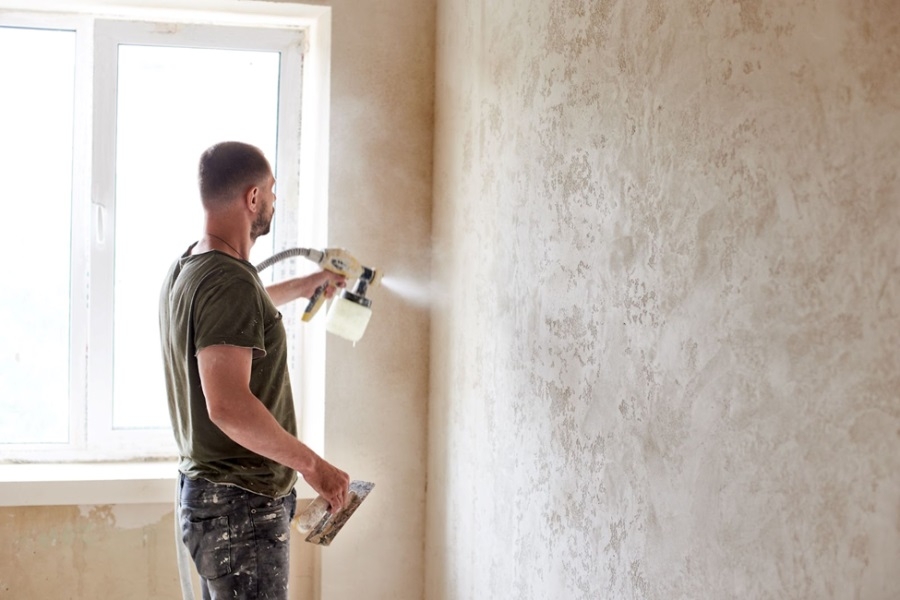Spray painting has revolutionized the painting industry, offering a modern and efficient approach to both interior and exterior painting projects. With its ability to cover large areas quickly and evenly, spray painting has become a preferred method for professional painters and DIY enthusiasts alike. In this comprehensive guide, we'll explore the various spray painting techniques, equipment, tips, and best practices to help you achieve professional-quality results on your next painting project, whether it's a room makeover or a complete exterior facelift.
Understanding Spray Painting Equipment:
Before diving into spray painting techniques, it's essential to understand the basic components of spray painting equipment. A typical spray painting setup consists of a spray gun, an air compressor, and a paint reservoir or container. The spray gun atomizes the paint into fine droplets and propels them onto the surface being painted, while the air compressor provides the necessary air pressure to propel the paint. Different types of spray guns and air compressors are available to accommodate various painting applications and project requirements, so choose equipment that best suits your needs and budget.
Choosing the Right Spray Painting Technique:
Spray painting offers versatility and flexibility, allowing for a wide range of techniques to achieve different finishes and effects. One of the most common techniques is the "crosshatch" or "crisscross" method, where the painter applies overlapping horizontal and vertical strokes to ensure even coverage and eliminate streaks or lines. Another technique is the "feathering" or "fading" method, where the painter gradually decreases the pressure on the spray gun as they move away from the surface, creating a seamless transition between colors or shades. Experiment with different techniques and practice on scrap materials before tackling your main painting project to master the art of spray painting.
Surface Preparation:
As with any painting project, proper surface preparation is crucial for achieving professional-quality results with spray painting. Begin by thoroughly cleaning the surface to remove dirt, dust, grease, and other contaminants that can affect paint adhesion and finish. Repair any cracks, holes, or imperfections in the surface using appropriate fillers or patching compounds and sand the surface to create a smooth and uniform substrate for painting. Additionally, mask off or cover any areas that you don't want to be painted, such as windows, trim, or fixtures, using painter's tape and plastic sheeting.
Controlling Overspray:
One of the challenges of spray painting is controlling overspray, which occurs when paint particles drift beyond the intended painting area and onto adjacent surfaces. To minimize overspray, adjust the spray gun settings, such as the air pressure and paint flow rate, to achieve a fine and controlled spray pattern. Use shields or barriers to block overspray and protect adjacent surfaces from paint drift, particularly when painting indoors or in confined spaces. Additionally, work in a well-ventilated area or use exhaust fans to remove overspray and fumes from the painting area, ensuring a clean and professional finish.
Mastering Paint Application:
Achieving smooth and even paint application is the key to a flawless finish with spray painting. Hold the spray gun perpendicular to the surface being painted and maintain a consistent distance between the gun and the surface to ensure uniform coverage. Start each stroke slightly before the edge of the area being painted and continue beyond it to prevent uneven buildup or "striping." Use overlapping strokes and a steady, controlled motion to achieve a seamless and professional-looking finish. Practice proper paint application techniques on scrap materials or test panels before tackling your main painting project to refine your skills and ensure optimal results.
Safety Precautions:
Safety should always be a top priority when spray painting, as it involves working with potentially hazardous materials and equipment. Wear appropriate personal protective equipment (PPE) such as safety goggles, respirators, gloves, and protective clothing to protect yourself from paint fumes, overspray, and other hazards. Work in a well-ventilated area or use exhaust fans to minimize exposure to paint fumes and ensure adequate airflow. Additionally, follow manufacturer recommendations and safety guidelines for handling, storing, and disposing of paint products and equipment to prevent accidents and ensure a safe and successful painting experience.
Conclusion:
Spray painting offers a modern and efficient approach to interior and exterior painting projects, allowing for quick, even, and professional-quality results. By understanding spray painting equipment, choosing the right techniques, properly preparing surfaces, controlling overspray, mastering paint application, and observing safety precautions, homeowners and DIY enthusiasts can achieve stunning finishes with spray painting. Whether you're painting walls, ceilings, furniture, or outdoor surfaces, spray painting techniques can help you save time, effort, and money while achieving flawless results that enhance the beauty and value of your home. With practice, patience, and attention to detail, anyone can master the art of spray painting and transform their space with confidence and creativity.









